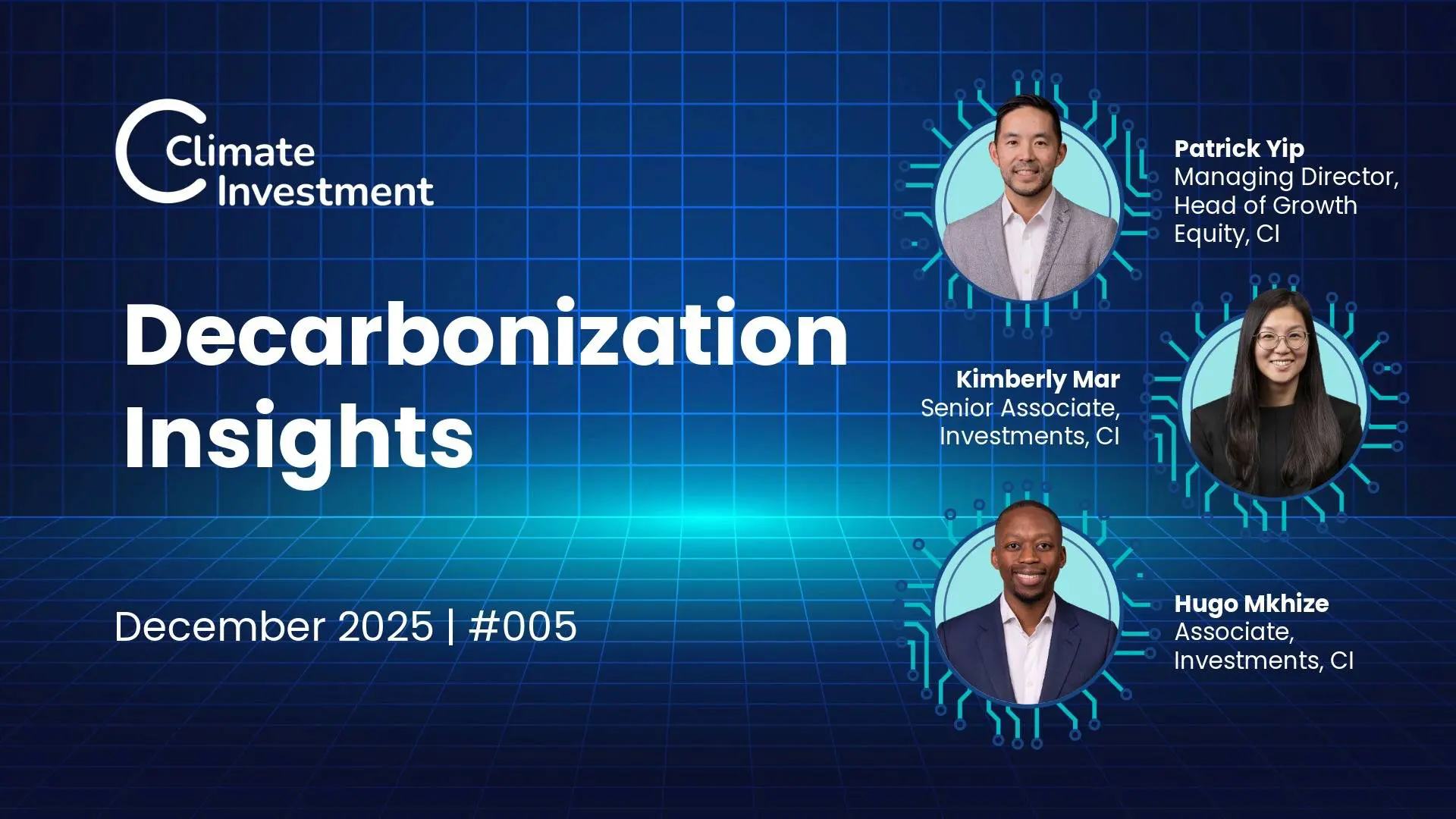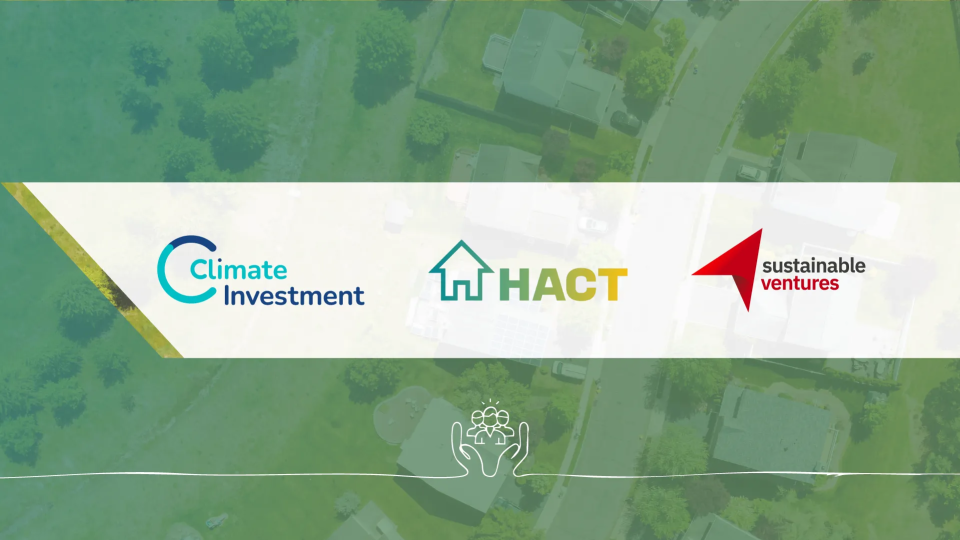More than hot air: solving the global methane problem
16 December 2021
This is the final article in a series exploring the methane opportunity: what it is, why it matters, and how OGCI Climate Investment is catalyzing change.


We’re highly confident that methane emissions can be significantly and economically reduced in the short term,” says Josh Haacker, Chief Investment Officer at OGCI Climate Investment. Its current fund is one of the few investors worldwide to make cutting methane emissions a core part of its strategy – and the investment is paying off for both the business and the planet.
Second only to carbon dioxide in terms of climate impact, methane is a potent greenhouse gas (with a much higher GHG intensity relative to carbon dioxide). But until recently, the exact amount being emitted was unknown. Now, thanks to a cluster of new companies and projects backed by OGCI Climate Investment, we have the technology to both measure methane, and to prevent its release in the first place.
Eight companies in the OGCI investment portfolio are leading the way. SeekOps, GHGSat, and Kairos Aerospace have made it possible to detect and locate methane emissions from the sky. Urbint is reducing methane leaks from the gas distribution network. Software companies Andium and Kelvin are using IoT and artificial intelligence to prevent emissions by giving energy companies greater control over their operations. While Clarke Valve and Qnergy are transforming the physical infrastructure of the industry, with new leak-proof valves and power generators that run on compressed air – vastly reducing the amount of methane that escapes from oil and gas production.
In short, we have the technology to make a lasting difference. Each innovation has been proven in the field, and can reduce or even eliminate methane emissions. The challenge now is to scale these solutions. That takes investment.


“We’re highly confident that methane emissions can be significantly reduced in the short term,”
says Josh Haacker, Chief Investment Officer at OGCI Climate Investment.
Funding the transition
The good news is that, globally, climate investing is on the rise. Every year the capital poured into ESG funds breaks new records[1]. In 2020, the total assets in sustainable funds totalled almost $1.7 trillion.[2] This year, Mark Carney, UN Special Envoy on Climate Action and Finance, unveiled that investors representing $130 trillion of AUM have signed up to 2050 NetZero goals.[3] As the regulatory and commercial incentives begin to align, what was once the preserve of philanthropists and NGOs has captured the imagination of financiers too.
The problem is that to date, investor capital has not prioritized methane. Though almost one-third of the climate problem, methane receives a vanishingly small fraction of the funding.[4] OGCI Climate Investment is seeking to right this. Its $1 billion fund is managed by specialists from the worlds of both finance and energy, with one-third of its investments so far targeted towards methane solutions. “When [OGCI Climate Investment] was formed, early decisions were taken to focus on the methane opportunity” explains Haacker. “Methane was overlooked from an investor capital perspective, but its carbon intensity , compared to carbon dioxide, made it an obvious choice for us.”
The problem is that to date, investor capital has not prioritized methane.
OGCI Climate Investment is seeking to right this.
From theory to practice
The challenge remaining, then, is adoption. To significantly reduce greenhouse emissions in the next decade, new technologies must rapidly move beyond the pilot stage to become a routine part of oil and gas operations, at scale.


“We’ve initiated approximately 60 pilots and deployments… largely in our member company universe…that resulted in technical performance proofs that have helped investees to accelerate conversion of those discussions into commercial contracts”
Avi Sahi, OGCI Climate Investment’s Chief Commercialization Officer
Here, too, OGCI Climate Investment is having an impact. From its inception, the fund was set up to offer more than sheer capital; behind each investment is a team of experts, offering practical support to help portfolio companies commercialize, scale up, and bring their new technologies directly to the market.
This is possible, in part, thanks to the OGCI’s unique membership structure. Founded in 2014, the OGCI is an industry-led initiative, established by a group of twelve oil and gas CEOs. Together, these majors and supermajors represent a big swathe of the market for new methane technology – meaning OGCI Climate Investment’s investees have direct access to their potential customers. Avi Sahi, OGCI Climate Investment’s Chief Commercialization Officer, explains: “We’ve initiated approximately 60 pilots and deployments… largely in our member company universe. Some of those pilot deployments have in fact resulted in technical performance proofs that have helped investees to accelerate conversion of those discussions into commercial contracts”.
This fact also allows the OGCI team to share ideas rapidly across the Oil & Gas sector. With strong partnerships across both OGCI member companies and the wider energy industry, the fund is well-placed to communicate success stories through regular webinars, technical reports, and case studies – helping to put its pioneering methane solutions on the map.
One such story comes from Qnergy, a company using compressed air technology to displace methane emissions from pneumatic devices. In March 2021, TotalEnergies began a 30-day trial of Qnergy’s system. Up to 98% of methane emissions were eliminated, while the technology proved simple to install and operate. Now, Total is deploying 100 Qnergy units across its Barnett field in Texas, with the potential for a further 300 by the end of 2024. Once fully deployed, the technology would reduce methane venting emissions by roughly 7,000 tonnes a year. [5]
OGCI funding also comes with expertise. Both the investment arm and OGCI members themselves have deep knowledge of the energy sector, and can help to commercialize products – whether by testing them in the field and honing them for practical use, or by understanding the policy environment in which they operate. This is particularly useful in the oil and gas industry, where regulation can evolve quickly. In the past few weeks alone, the US Environmental Protection Agency has proposed new methane rules for the sector, which technology could help to enable. Matthew Harwood, VP Business Strategy at OGCI Climate Investment notes, “the value that we bring is far beyond just cash… we can support our portfolio companies to think about how they can expand in a way that aligns with policies, support mechanisms, or carbon pricing.”


The most unique feature of the fund remains its impact. “Our mandate is to deliver climate impact. That’s why we are in business”
Josh Haacker, Chief Investment Officer, OGCI Climate Investment
Is the strategy working?
Perhaps the most unique feature of the fund, however, remains its climate impact. While most investors prioritize financial returns alone, OGCI Climate Investment also focuses on measuring impact success: “our mandate is to deliver climate impact,” says Haacker, “that’s why we are in business”. Last year, alongside a coalition of impact investors, the OGCI team began developing a new methodology for assessing climate impact, known as Project FRAME. The group plans to collaborate with other investors and third parties to establish common metrics that will become the industry standard, helping investors worldwide measure their climate footprint in an equitable way. Without common standards, it will be challenging to truly monitor progress against global climate goals.
In the meantime, OGCI and Climate Investment are publishing progress reports. And their strategy is paying off: in 2020, OGCI member companies reduced their greenhouse gas emissions by 632Mt, with aggregate upstream methane emissions cut by 11% since 2017.[6] As the fund’s portfolio grows, so too do the opportunities for methane reduction: this year’s Progress Report shows that Climate Investment’s fund investments have enabled a reduction of approaching 20Mt of carbon emissions to date.


“We have the tools we need to tackle the methane challenge head-on… And if we succeed, we can make a real difference.”
Dr Pratima Rangarajan, Chief Executive of OGCI Climate Investment.
Whilst methane may be second to carbon dioxide in terms of its climate impact, it lands a much higher GHG intensity relative to carbon dioxide. In the next series, we will explore the technologies that could help us to confront the world’s most powerful greenhouse gas, and how OGCI Climate Investment is helping the fossil fuel industry to cut carbon emissions.





